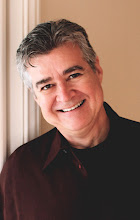I have always looked at interviewing as an art as well as a science, because no matter what the topic may be, the first thing you've got to do is establish a level of rapport with your interviewee. Rapport enables trust, trust can lead to relaxation, and relaxation can result in spontaneity.
And if you have an opportunity to share a laugh with your interview subject early on, great. Don't force it, though, because most interviewees have little patience for being interviewed by a would-be stand-up comic.
The value of (guided) spontaneity is that it can unearth the offhand facts or opinions that add depth to your writing. The interviews I've done that have been the most productive are those where it was apparent the interviewee felt relaxed enough to engage in some free association.
Every interviewer, of course, has an advantage in that most people respond positively when asked to talk about themselves or something important to them, but it's also important to find something that genuinely interests you about the topic and the interviewee.
My collaboration with Rory Flynn on her book THE BARON OF MULHOLLAND: A Daughter Remembers Errol Flynn was that rare combination of a subject that I found utterly fascinating -- a personal look at one of the film industry's greatest icons and adventurers -- and an interviewee I genuinely liked. Like her father, Rory is strong-willed and passionate on the subjects that matter to her.
And we laughed a lot -- always a good sign.
The series of conversations we had over a period of nine or ten months for the book drew out a number of little-known facts and stories, surprising since there have been more books written about Errol Flynn than almost any other Hollywood celebrity.
One of our discussions started with her father's love of animals and led to Rory's recalling the largely unknown fact that Errol had been recognized by a fledgling ASPCA as an early protector of animals used in filming decades before the animal rights movement took hold in Hollywood:
"One of the reasons my father built Mulholland Farm similar to a ranch in Australia was because of his love for animals. There was a barn on the property and we had a fulltime caretaker tend to the livestock. The animal population on the farm, in fact, continued to grow over the years because my father often adopted some of the livestock after working with them in some of his films.
Horses, sheep, ducks, pigs, chickens, dogs, cats -- even a particularly cheeky monkey named Chico that he brought home after working with him in THAT FORSYTE WOMAN. Chico had the run of the Farm -- though he had a cage, he was rarely locked inside it -- and spent many days tearing up and throwing things around inside the house. Rather than get my father upset, though, his wild antics would merely inspire gales of laughter.
Errol's devotion to animals even led him to take actions on behalf of the animals used in certain films he made. When filming began on THE CHARGE OF THE LIGHT BRIGADE in 1936, for example, he objected to the use of trip wires on the horses and refused to take part unless precautions were taken to minimize any injuries to them. For this he received a letter of appreciation from the ASPCA, a newly formed association that had not yet fully examined animal rights issues within the context of filmmaking."
Subscribe to:
Post Comments (Atom)

No comments:
Post a Comment